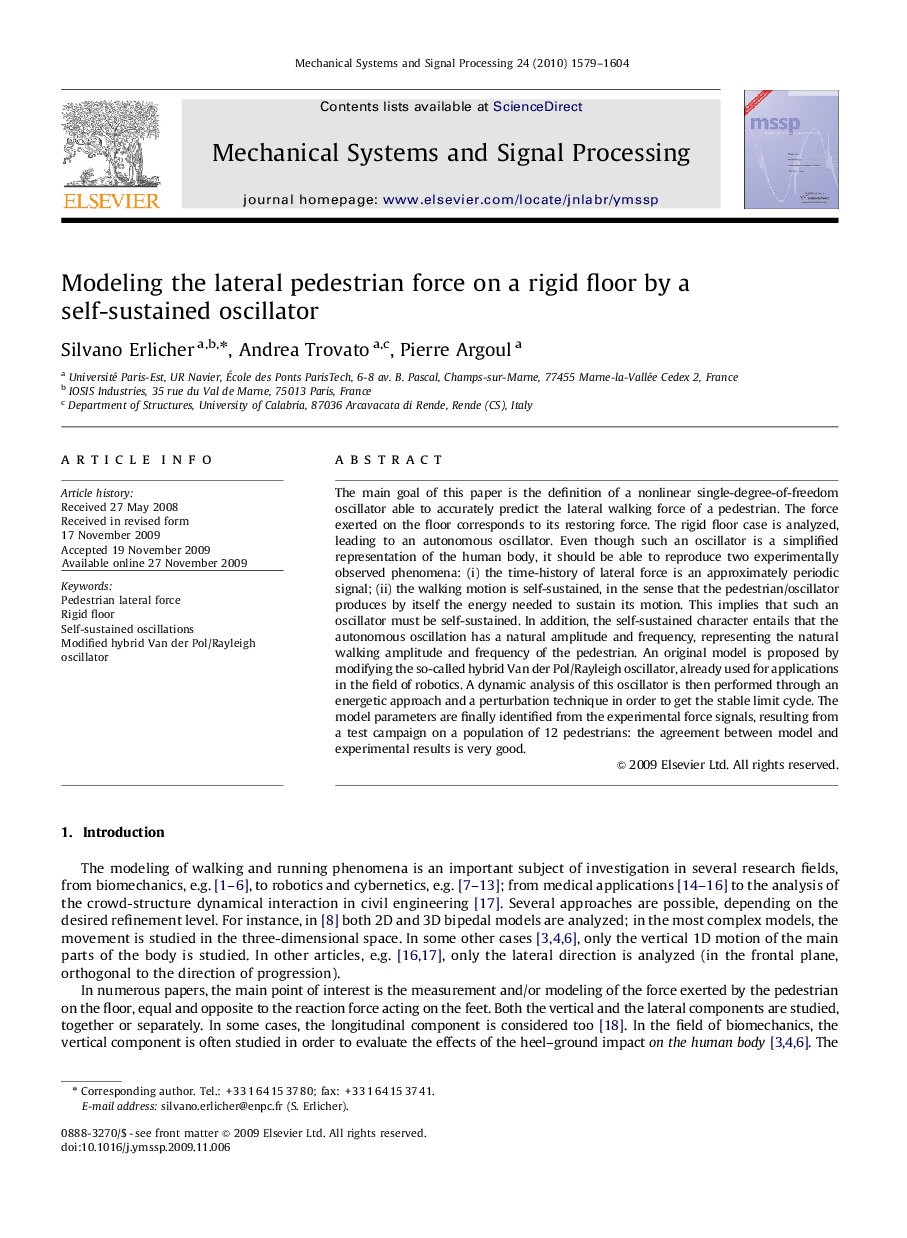| Article ID | Journal | Published Year | Pages | File Type |
|---|---|---|---|---|
| 561743 | Mechanical Systems and Signal Processing | 2010 | 26 Pages |
The main goal of this paper is the definition of a nonlinear single-degree-of-freedom oscillator able to accurately predict the lateral walking force of a pedestrian. The force exerted on the floor corresponds to its restoring force. The rigid floor case is analyzed, leading to an autonomous oscillator. Even though such an oscillator is a simplified representation of the human body, it should be able to reproduce two experimentally observed phenomena: (i) the time-history of lateral force is an approximately periodic signal; (ii) the walking motion is self-sustained, in the sense that the pedestrian/oscillator produces by itself the energy needed to sustain its motion. This implies that such an oscillator must be self-sustained. In addition, the self-sustained character entails that the autonomous oscillation has a natural amplitude and frequency, representing the natural walking amplitude and frequency of the pedestrian. An original model is proposed by modifying the so-called hybrid Van der Pol/Rayleigh oscillator, already used for applications in the field of robotics. A dynamic analysis of this oscillator is then performed through an energetic approach and a perturbation technique in order to get the stable limit cycle. The model parameters are finally identified from the experimental force signals, resulting from a test campaign on a population of 12 pedestrians: the agreement between model and experimental results is very good.
